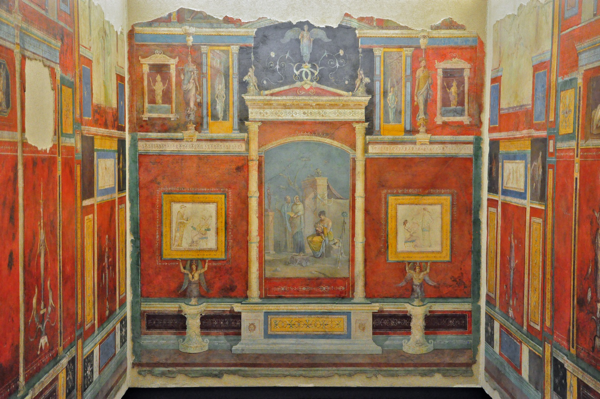Upper Level Seminar: Colour, Glitter, Detail, Presence - Reconstructing Value in Ancient Roman Art

What did ancient Romans notice when they looked at the visual art of their culture? What aspects of images did they especially value? Roman art has long been associated with white marble portrait busts; it has been proposed that precise representations of reality in 'simple' materials embodied the core values of classical aesthetic taste. But the material remains of the ancient Roman world tell a much more varied, and multi-coloured, story. Homes and cities in the ancient Roman world were full of images of bold colour, intricate patterns, glittering materials, and fantastical representations, made in materials including stone, but also ranging to encompass pigment, metal, ceramics, fabric, and glass. Nor was this variety relegated to the sphere of domestic decoration alone, and so excised from the culture's written reflections on aesthetic value (as has sometimes been implied). Rather, this course demonstrates that our traditional conceptions of Roman 'art' fail to comprehend the complexity and diversity of Roman aesthetic value, and the visual effects that were appreciated and noticed in this cultural context. Ancient Roman aesthetic thinking is revealed to have foregrounded an interest in contrasting colours; shimmering light effects; complexity of forms; and dramatic presence of the impossible, in ways that the traditional narrative of classical art history long overlooked. By juxtaposing Roman images in a full range of materials, and setting them in a productive dialogue with the ancient texts that discuss these media, we reconstruct a particularly ancient Roman vocabulary of visual aesthetic value.
Textbooks/Other Materials: All readings will be on Canvas
Course Requirements:
Intended Audience: Undergraduate and Graduate
Class Format: Seminar
Estimated Cost of Materials: $0-50
HISTART Distribution Requirements: A. Middle East, D. Europe and the US, 1. Ancient